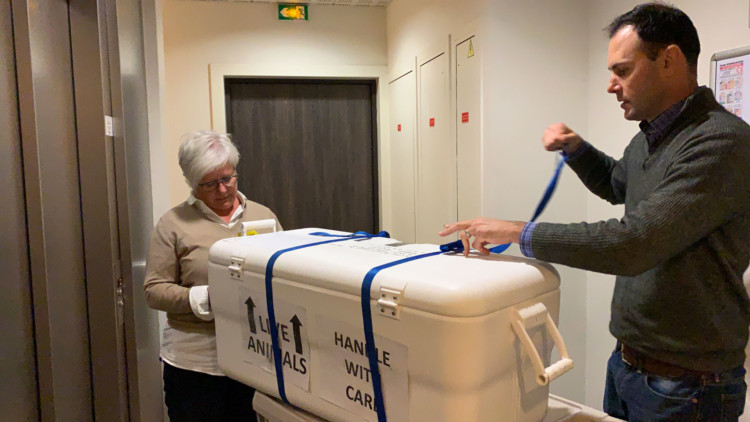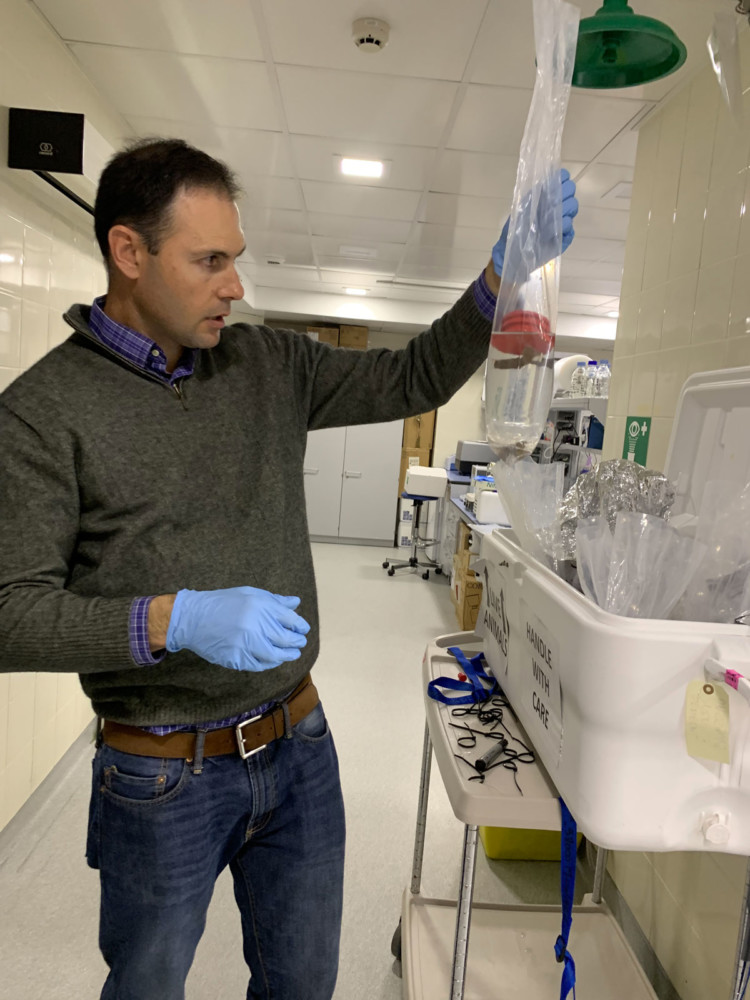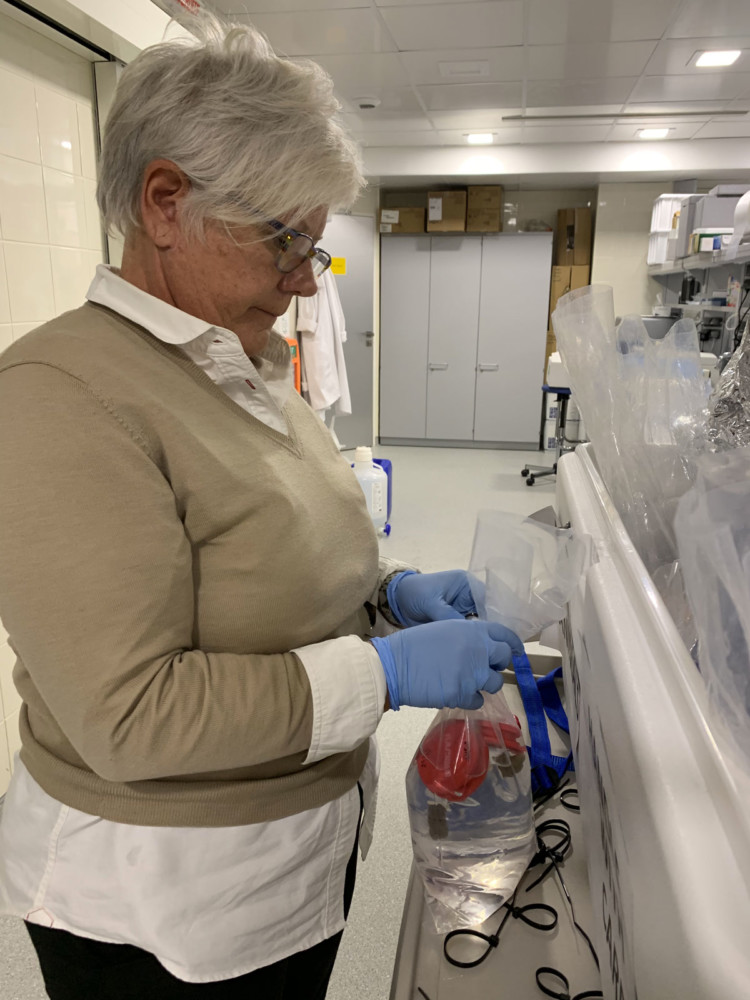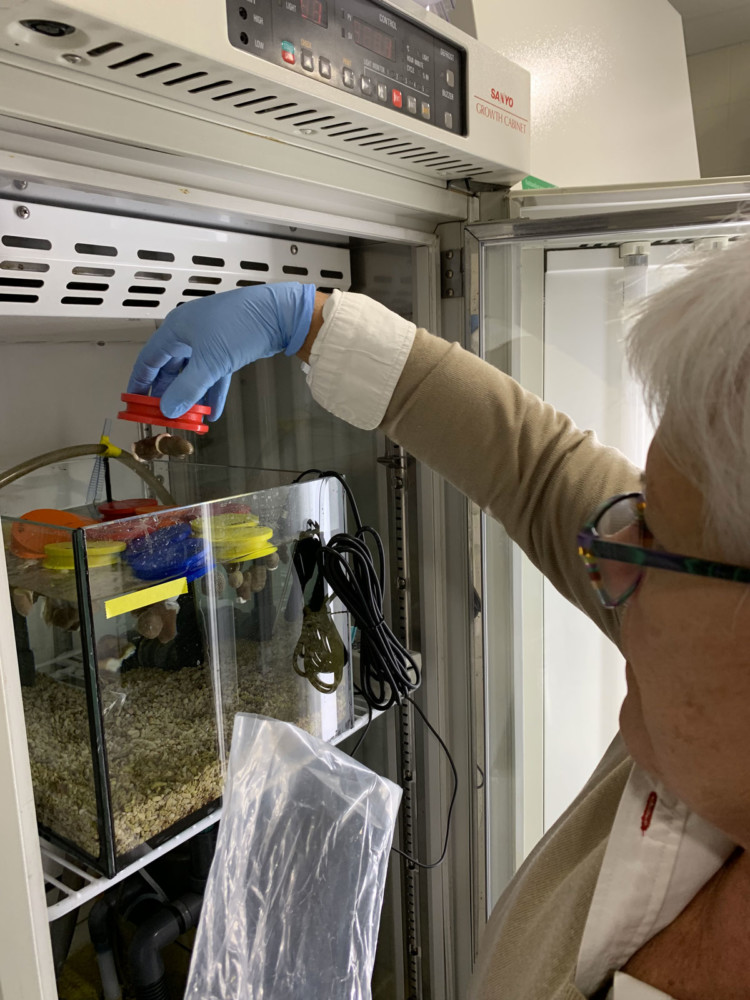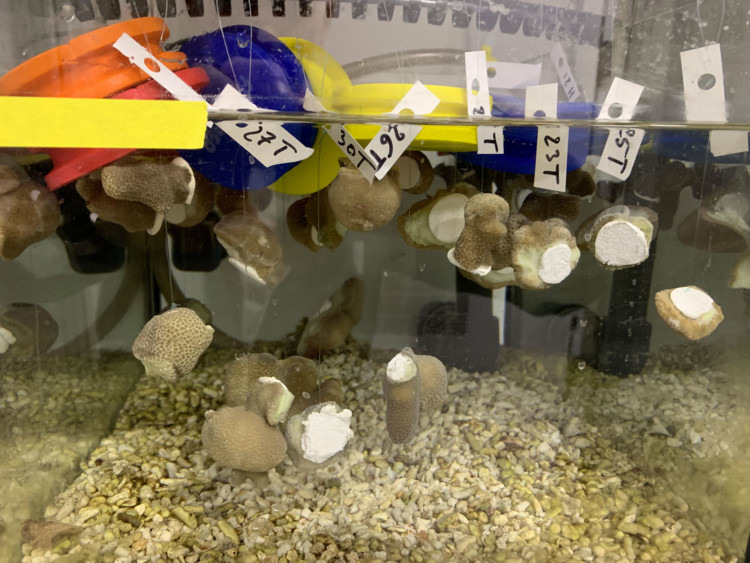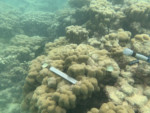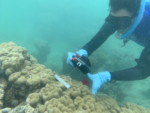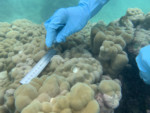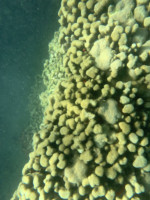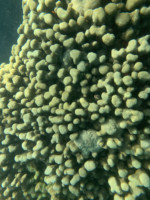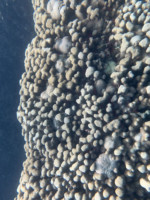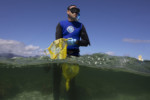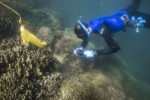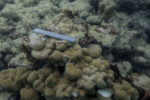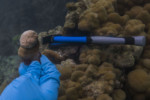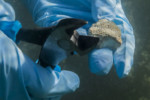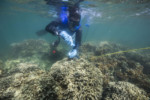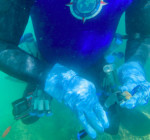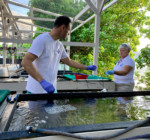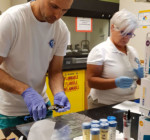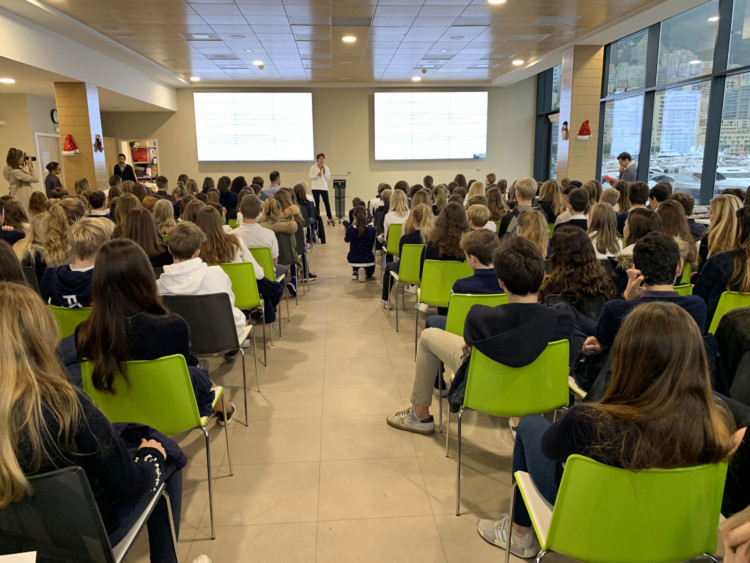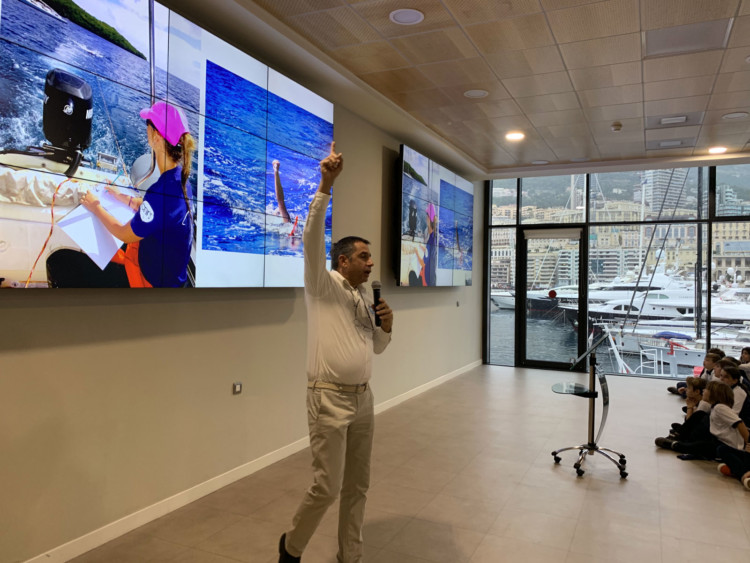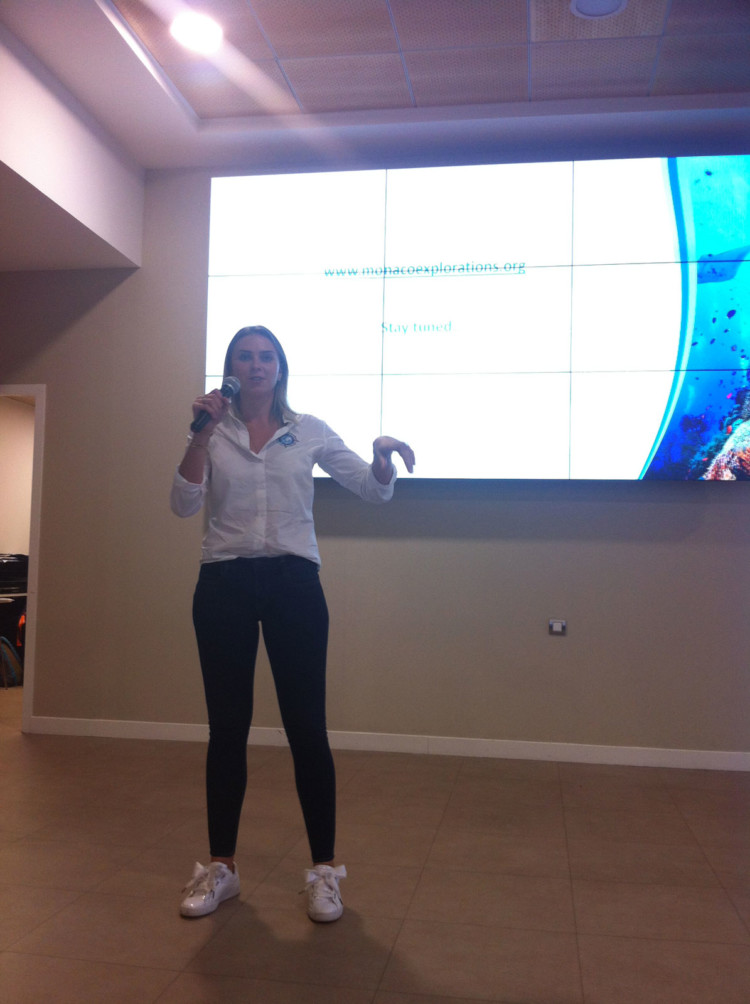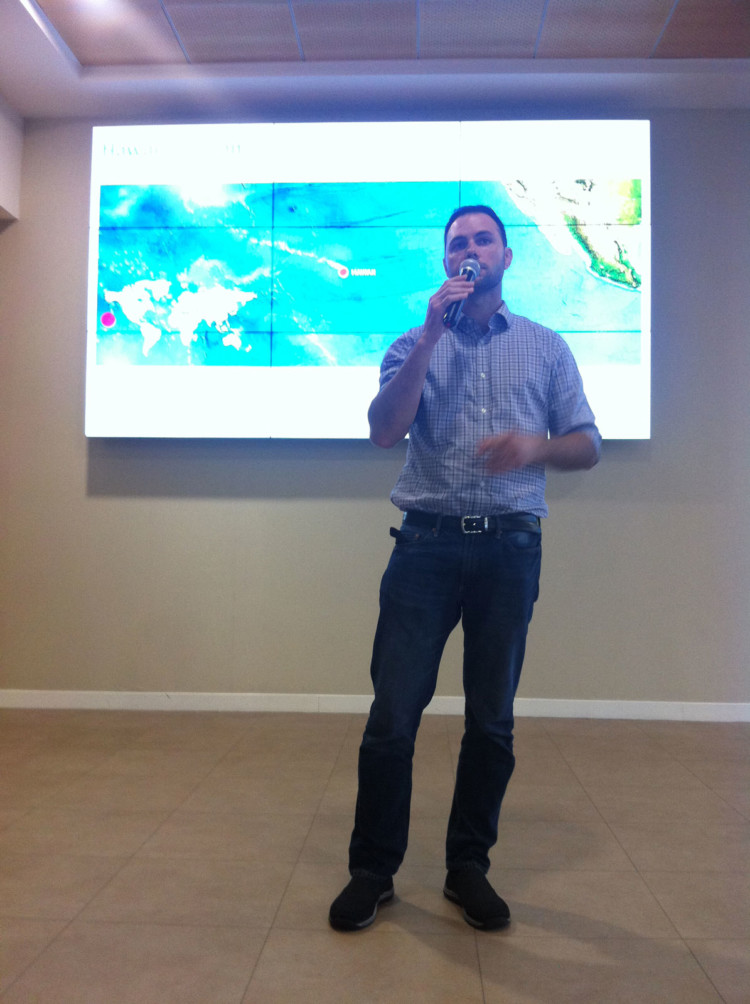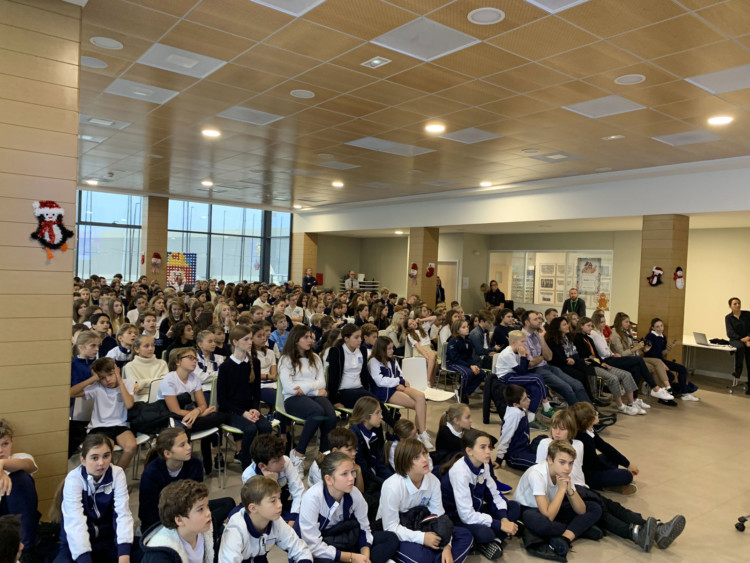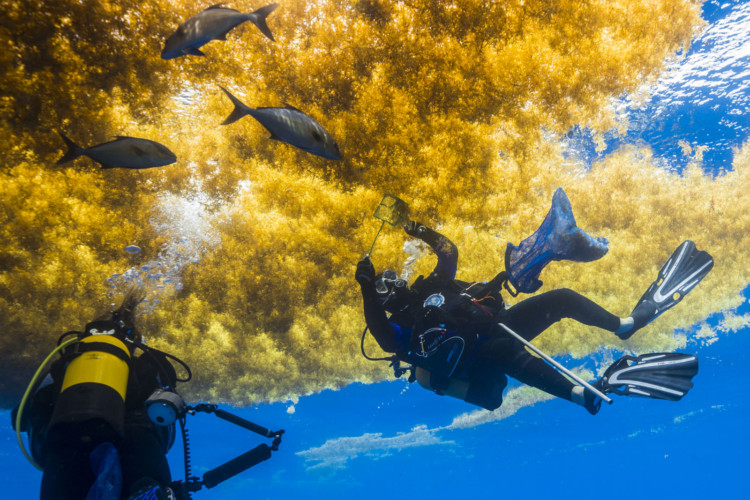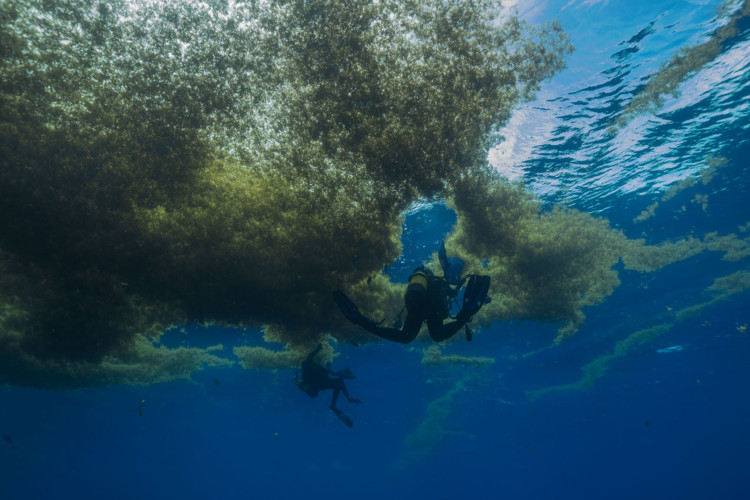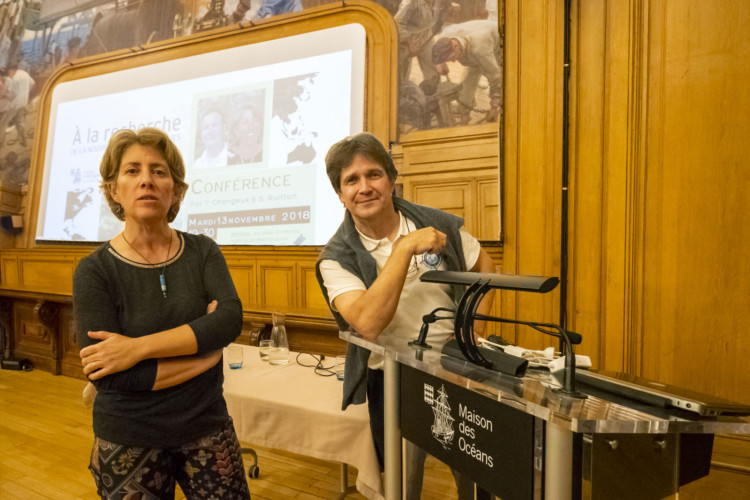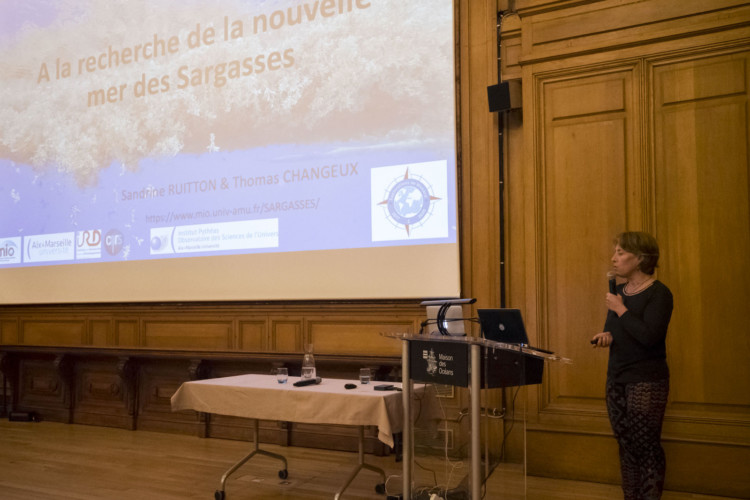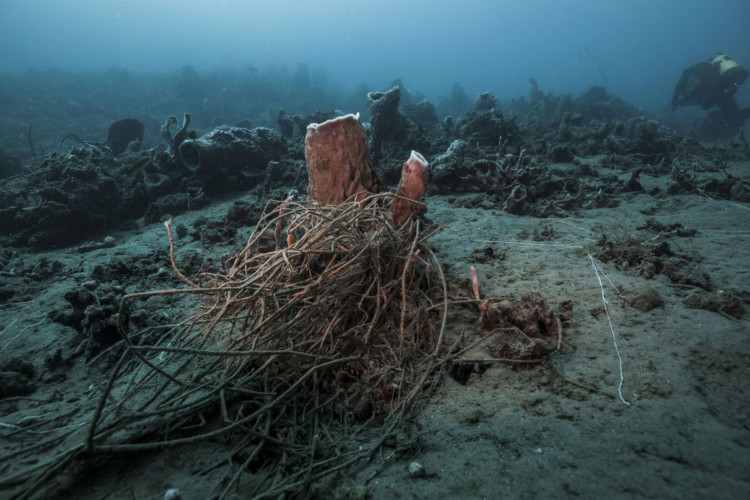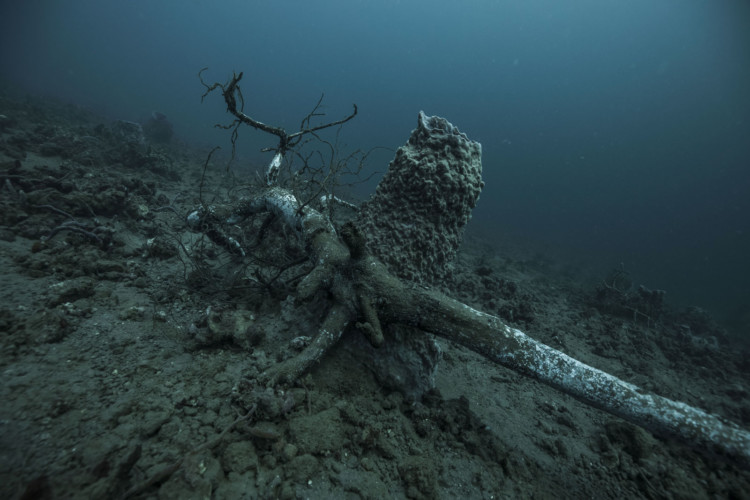The coral samples collected in Hawaii by Drs. Dorota Czerucka and François Seneca, researchers at Centre Scientifique de Monaco, have arrived at the laboratory and are alive and in good condition for continuing the research. The 140 samples include both healthy and diseased pieces of coral from colonies off the coast of Oahu Island in Hawaii. The research area is focused on innate immunity in the corals and in humans, and the researchers will study the means used by the coral to fight the diseased tissue.
[vc_row][vc_column][vc_column_text]Thank you to KITV for running a story on the evening news of our mission here in Hawaii.
[/vc_column_text][/vc_column][/vc_row][vc_row][vc_column][gem_button position=”center” size=”medium” corner=”3″ icon_pack=”elegant” text=”See video on KITV” link=”url:https%3A%2F%2Fwww.kitv.com%2Fstory%2F39608429%2Fcoral-showing-abnormal-growth-in-kaneohe-bay-could-be-cancerous||target:%20_blank|”][/vc_column][/vc_row]
During this mission in Hawaii, we are focused on collecting samples particularly from two species of tropical Scleractinian (stony) corals that show abnormal growths:
- Porites evermanni (common name lobe corals) (massive)
- Porites compressa (common name finger corals) (branching)
Stony corals are the world’s primary reef builders. Reef building corals are only found in shallow, tropical and sub-tropical waters because the algae that they are in symbiosis with need light for photosynthesis and temperatures ranging from 70-85 degrees Fahrenheit.
Reefs play a crucial role in protecting shorelines from storms and surge water and help prevent shore erosion. Reefs are vital to the global economy with an estimated value of 172 billion US Dollars annually providing food, protection, tourism jobs and shoreline protection.
Hawaii does not have many coral species and only five species here are main reef builders. Because of this, and because coral health is imperative to marine life, understanding why these corals are showing abnormal growths, and how they are fighting the disease (or not) is incredibly important.
The growths (abnormal cell reproduction) look different on the two species.
On the Porites evermanni there is a pink pigment that is produced by the coral as a protection of something that is invasive. We see the pigment coming later (not in the initial growth). This reaction tells us the coral is fighting something invasive.
On the Porites compressa, the growths are clearly distinguishable from the healthy coral as shown in the photo below. The P. compressa is a braching coral, meaning it grows in finger like shapes, but when the abnormal growths are present, they grow in massive formations, making it easy to see the disease.
[vc_row][vc_column][gem_button position=”center” corner=”3″ icon_pack=”elegant” text=”Read on Big Island Now website” link=”url:http%3A%2F%2Fbigislandnow.com%2F2018%2F12%2F02%2Fscientists-study-links-between-human-and-coral-health%2F||target:%20_blank|”][vc_column_text] [/vc_column_text][/vc_column][/vc_row][vc_row][vc_column][/vc_column][/vc_row]
[/vc_column_text][/vc_column][/vc_row][vc_row][vc_column][/vc_column][/vc_row]
Dorota Czerucka and François Seneca from the Centre Scientifique de Monaco have collected 140 samples of both healthy and diseased corals in two locations.
The scientists are collecting samples of corals showing abnormal growths which could be tumors. The team is conducting research to understand the immune mechanism response given by the corals to this situation.
Today, the Monaco Explorations team spent more than two hours in the waters of Kāneʻohe Bay off the shores of Moku O Loʻe Island, Hawaii to collect samples from corals showing abnormal growths. The team then brought the samples to the laboratory on-island to preserve them for their return to Centre Scientifique de Monaco. The goal is to understand if these abnormal growths are malignant and which mechanisms are activated to fight the growths.
Photos © Monaco Explorations.
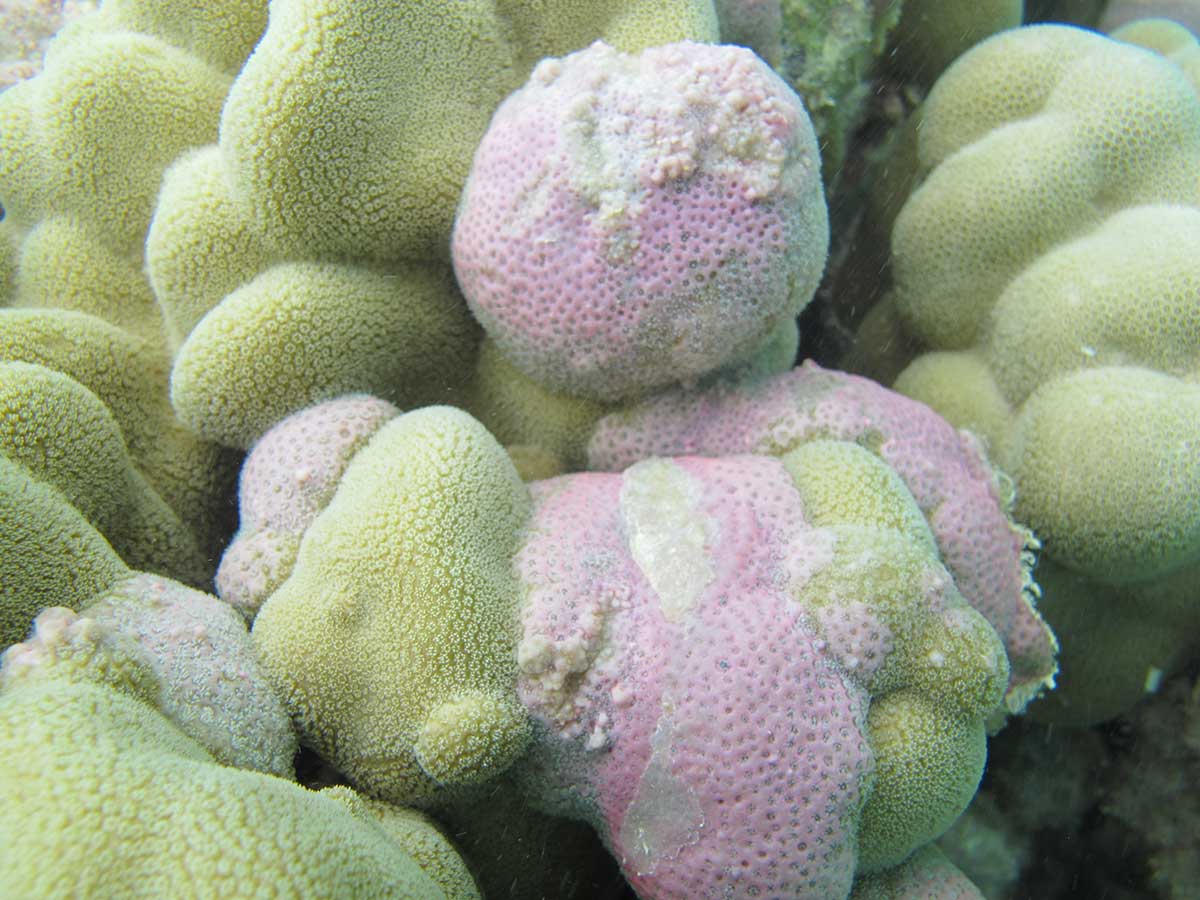
Researchers from Centre Scientifique de Monaco (CSM) will collect samples from two species of corals showing abnormal growths in Hawaiʻi’s Kāneʻohe Bay from November 30th until December 9th, 2018. The mission takes place as part of the Monaco Explorations campaign and will be hosted by the Hawaiʻi Institute of Marine Biology on Moku O Loʻe Island.
To read more, view the press release.
This morning we were at the International School of Monaco with 230 students talking about our missions in Colombia, Martinique and Hawaii about sharks, turtles and corals. The youth of today are leaders and decision makers of the future. That’s why it’s so important to get them interested and engaged in environmental issues.
Researchers Thomas Changeux and Sandrine Ruitton from the Mediterranean Institute of Oceanography at Aix-Marseille University presented their research on Sargassum, a brown algae, at the Oceanographic Institute of Paris. The studies were carried out with the Monaco Explorations campaign on a mission crossing the Atlantic Ocean in October 2017. The research team is working to identify causes of the Sargassum proliferation, which, when it reaches shore can cause dramatic consequences for the water and air quality and health of shore communities.
Saint-Pierre, Martinique, November 11
Hurricanes are devastating on the surface, destroying everything in their path with dramatic effects on people and infrastructure. However, these phenomena affect the seabed with the same violence. During our time in Martinique 2 weeks ago, Monaco Explorations captured some of this devastation near Saint-Pierre. There are dead corals and extinct biotopes.
See more on the gallery.
Photos © Monaco Explorations / Olivier Borde
